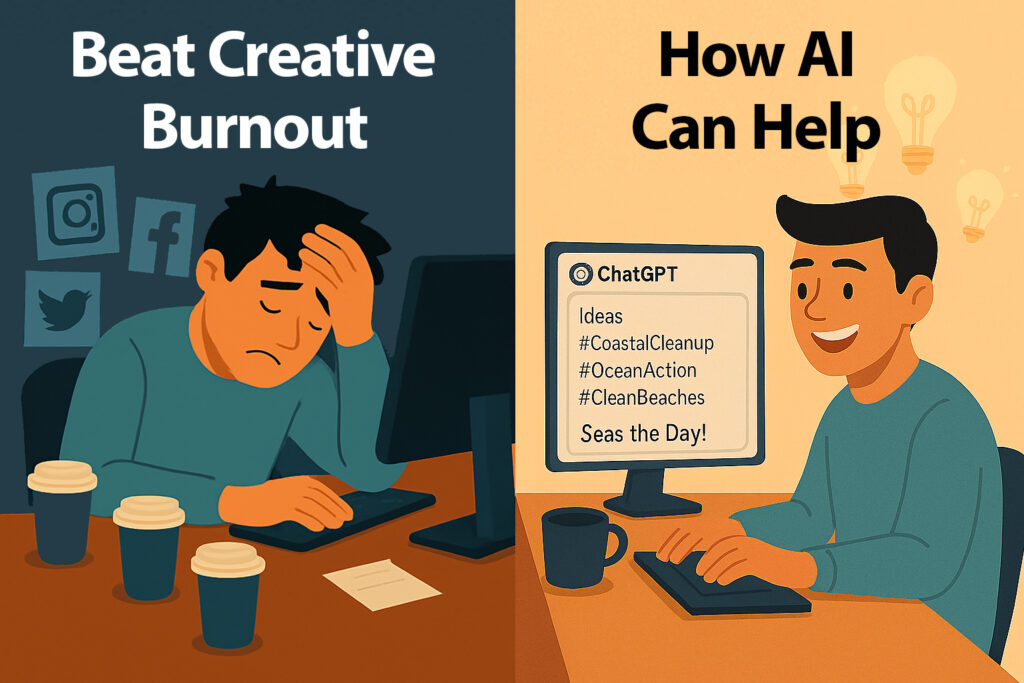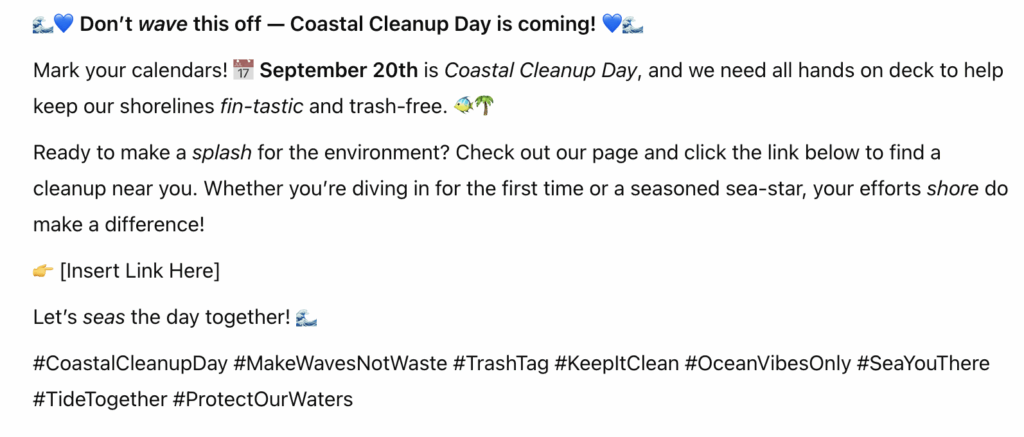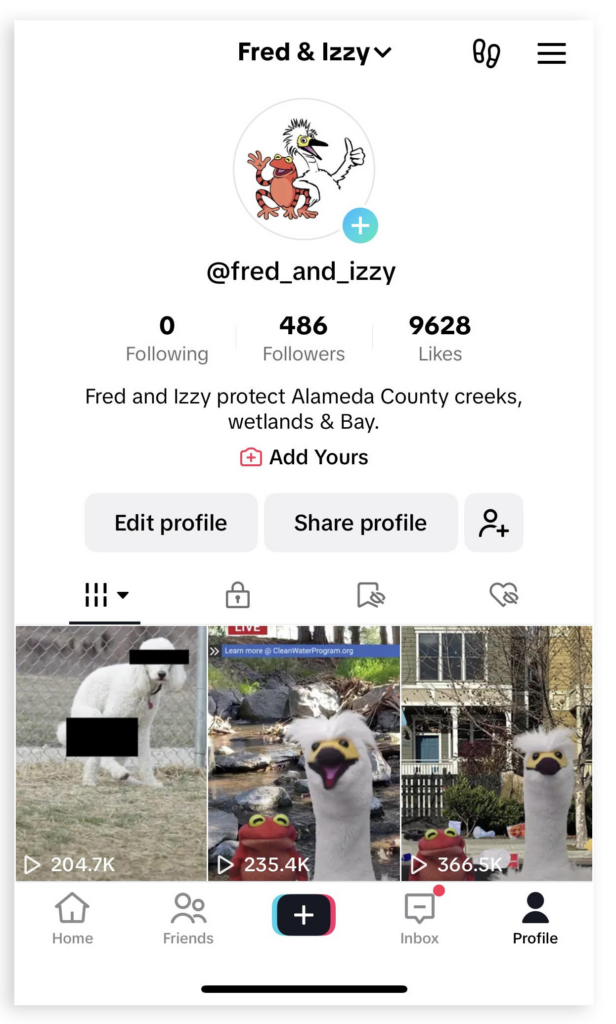
If you’ve ever managed social media, you know the drill: the constant demand for fresh, engaging content. We’re often told “content is king” and that regular posting is crucial for building an audience. For many of us in environmental marketing, the appeal of this industry lies in its creative outlet. But what happens when you hit a creative wall? What if you’re just out of ideas, or simply not “in the mood” to be creative, especially when it’s a weekly or even a daily requirement?
This is where an AI digital assistant can be helpful. I say “help” because it’s definitely not a replacement for our own creativity. You might not even realize it, but AI is likely already woven into your daily routine. Think about Gmail’s Smart Compose: those intuitive suggestions that appear as you type is AI at work, streamlining your communication and saving you valuable time.
However, as you’ve probably experienced, AI isn’t always perfect. While it can anticipate what you might want to say and offer efficient shortcuts, it can also lead to generic, “cookie-cutter” responses. For quick replies, it’s a time-saver, but for more detailed or nuanced explanations, AI often falls short. This “tone-deafness” is why it’s not always the best for generating entire pieces of copy.
Need a Spark?
So, when should you use an AI digital assistant to help with content creation, and when should you step in? Instead of seeing AI as a complete content creator, think of it as a great starting point. Tools like ChatGPT or Google’s Gemini can be prompted to generate initial drafts for general things like an upcoming holiday social media post. They can inspire you by drafting copy, create specific, related hashtags, and even include a pun, all of which you can then customize to perfectly convey your message.
For platforms like Facebook and Google Ads, AI tools can assist in generating headlines, captions, and descriptions based on your original copy or URL. When character limits are a concern, such as on X (formerly Twitter) or Google Ads, AI tools can rewrite your existing copy to fit specific constraints. For example, you could instruct an AI to condense a Facebook post into 280 characters or less, ensuring it remains consistent with your original message while adhering to the platform’s limitations.
Here’s an example of the prompt I entered into ChatGPT:

This is what it came up with:

Put AI to Work for You
This draft is a good start, but it’s all over the place. However, I appreciate the clever puns and the helpful hashtag suggestions. I would use this by incorporating the elements I like most and then making it more concise. Once I edit the prompt, this is what the post will look like:
“Mark your calendars! 📅 September 20th is Coastal Cleanup Day, and we need all hands on deck to help keep our shorelines and local waterways litter-free. Seas the Day! Join a cleanup in Alameda County to make a difference and connect with your community. Check out our page and click the link below to find an event near you. #CoastalCleanupDay #MakeWavesNotWaste #SeaYouThere
Be sure to carefully review and edit each AI creation to make sure your organization’s message, tone and voice come through every time. This is where your expertise comes in AI; can get you off the ground when you’re feeling stuck, but you’re still the pilot guiding the message.
Let’s be honest, there’s still a bit of a stigma when using AI tools, especially when it comes to work. Some folks see it as “cheating,” and a shortcut that undermines genuine effort. As I highlighted earlier, AI’s role is not as your replacement, but as a helper that can provide fresh ideas, establish a foundation for your work, and help you organize your thoughts.
So, the next time you’re stuck staring at a blank screen, remember you’re not alone.
